Hey there Xsives,
I've been planning this post/tech tip for some time, but in lieu of recent posts about riders going down/getting turned in front of, etc., seems like a timely opportunity for it! There is a lot of data that is being presented in this, I tried to put it into formats that are easy to understand and relate to!
I'm a Certified Ophthalmic Technician/Surgical Assistant with over 25 years of experience. I am at times required to fill out patient's DMV forms stating their visual function levels, so I am very familiar with the standards!
Most everybody knows that 20/20 vision is the accepted level for normal good vision, but what you may NOT know is that you are NOT required to have 20/20 vision to DRIVE! The standards of vision in Best Corrected/wearing glasses values for driving across the USA are as follows:
20/40 vision and a peripheral field of vision of 100 degrees to have the ability to drive at NIGHT.
20/70 vision and a peripheral field of vision of 70 degrees to be allowed to drive in the DAYTIME.
Now the kicker...this is ONLY ONE EYE!! A person does not need to even have a second eye!!
Commercial/CDL licenses DO require 20/40 best corrected in BOTH EYES, and 100 degrees of peripheral vision.
Some examples. A healthy person's field of vision is appx. 180 degrees, from left ear to right ear when looking straight ahead.
Below is a view taken at a local intersection just standing in the driving lane. Apologies for quality, I don't have a PANARAMIC camera, so there are defects in the Splicing, but you can get the IDEA!

Now from INSIDE the Car:

Now just showing the view to the left from the car, note the TREES, Signal Light Pole, Power Line Poles, etc.!!
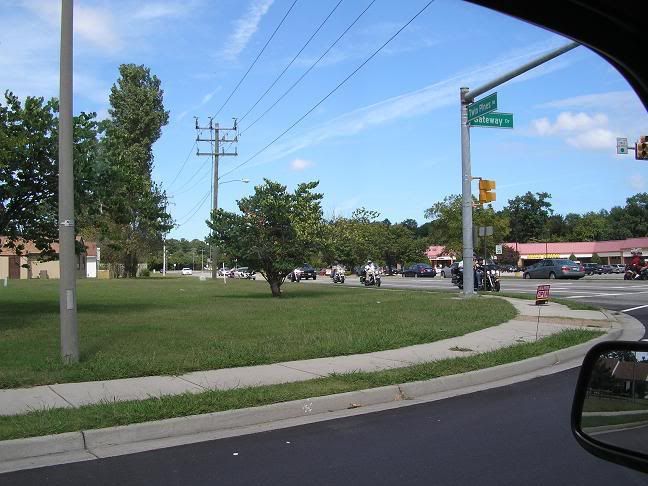
Here's a view pulling up to the crosswalk of the intersection.
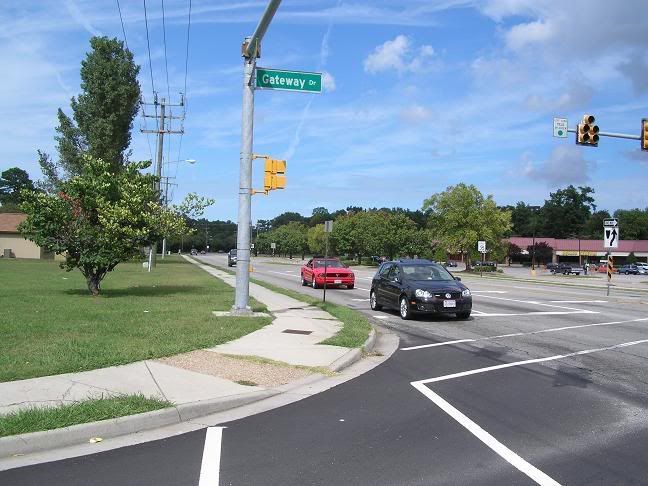
Now a zoomed in view, do you see the bike yet? It's on the sidewalk, but a full block away!
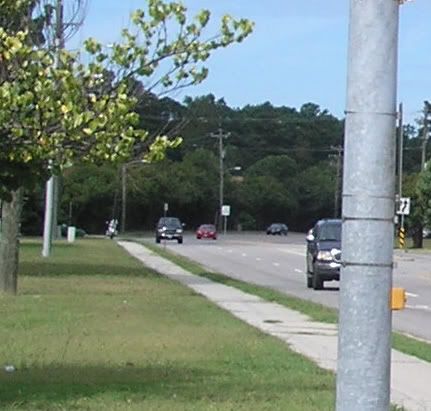
Now, just a few examples of comparing the view/size of a standard SUV...my Xterra and my bike! Again, didn't want to have bike sitting wayout in road next to car, so I did some splicing!
First, view at 50 feet away.
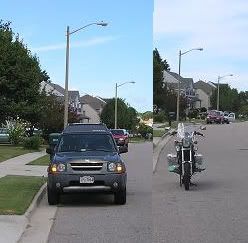
Now 100 feet away.
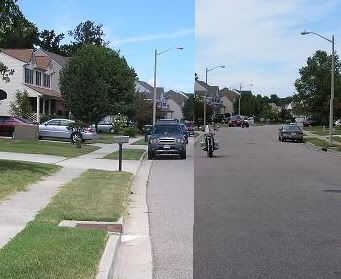
Now 200 feet away.
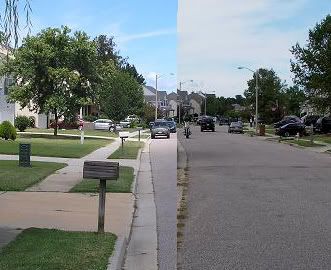
And below is a shot of my bike below a standard Speed Limit Sign. The size of the lettering for the words Speed Limit are ~4" tall, which is just a bit over the 20/200 size lettering we use for vision exams, and this photo was taken at 200 feet, 5Mp Camera at full resolution, and then when I zoomed in on the actual image, the words Speed Limit were illegible, so looks like my camera doesn't quite have 20/20 vision, but close!
Below image has been reduced in res/size for posting.

Continued in part 2
I've been planning this post/tech tip for some time, but in lieu of recent posts about riders going down/getting turned in front of, etc., seems like a timely opportunity for it! There is a lot of data that is being presented in this, I tried to put it into formats that are easy to understand and relate to!
I'm a Certified Ophthalmic Technician/Surgical Assistant with over 25 years of experience. I am at times required to fill out patient's DMV forms stating their visual function levels, so I am very familiar with the standards!
Most everybody knows that 20/20 vision is the accepted level for normal good vision, but what you may NOT know is that you are NOT required to have 20/20 vision to DRIVE! The standards of vision in Best Corrected/wearing glasses values for driving across the USA are as follows:
20/40 vision and a peripheral field of vision of 100 degrees to have the ability to drive at NIGHT.
20/70 vision and a peripheral field of vision of 70 degrees to be allowed to drive in the DAYTIME.
Now the kicker...this is ONLY ONE EYE!! A person does not need to even have a second eye!!

Commercial/CDL licenses DO require 20/40 best corrected in BOTH EYES, and 100 degrees of peripheral vision.
Some examples. A healthy person's field of vision is appx. 180 degrees, from left ear to right ear when looking straight ahead.
Below is a view taken at a local intersection just standing in the driving lane. Apologies for quality, I don't have a PANARAMIC camera, so there are defects in the Splicing, but you can get the IDEA!

Now from INSIDE the Car:

Now just showing the view to the left from the car, note the TREES, Signal Light Pole, Power Line Poles, etc.!!

Here's a view pulling up to the crosswalk of the intersection.

Now a zoomed in view, do you see the bike yet? It's on the sidewalk, but a full block away!

Now, just a few examples of comparing the view/size of a standard SUV...my Xterra and my bike! Again, didn't want to have bike sitting wayout in road next to car, so I did some splicing!
First, view at 50 feet away.

Now 100 feet away.

Now 200 feet away.

And below is a shot of my bike below a standard Speed Limit Sign. The size of the lettering for the words Speed Limit are ~4" tall, which is just a bit over the 20/200 size lettering we use for vision exams, and this photo was taken at 200 feet, 5Mp Camera at full resolution, and then when I zoomed in on the actual image, the words Speed Limit were illegible, so looks like my camera doesn't quite have 20/20 vision, but close!
Below image has been reduced in res/size for posting.

Continued in part 2


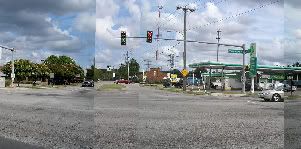
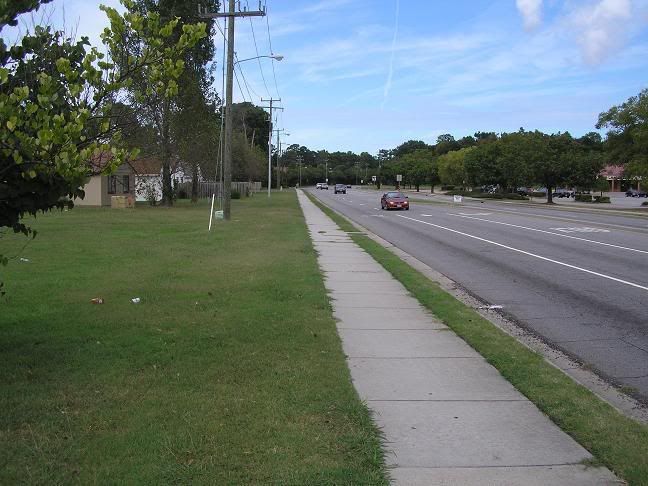
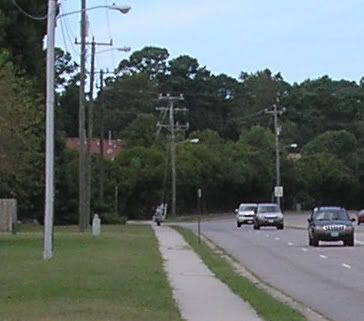
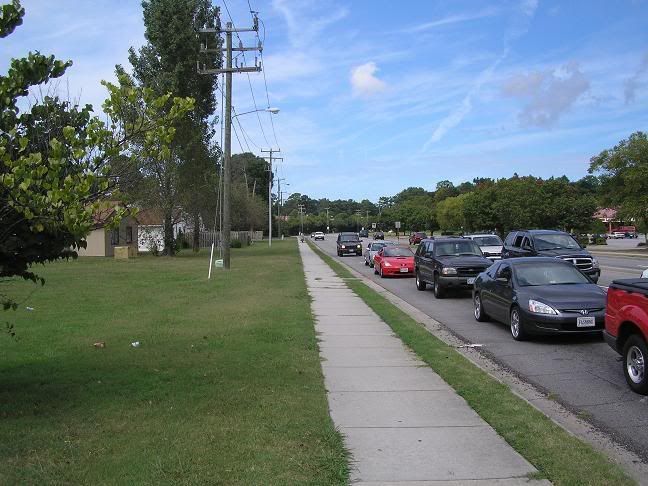


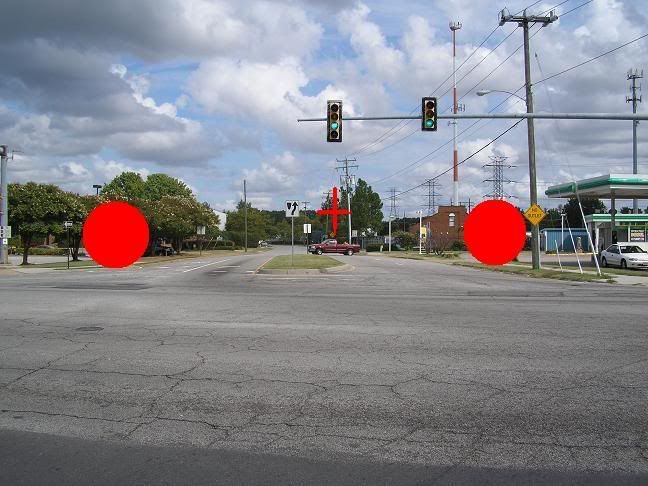
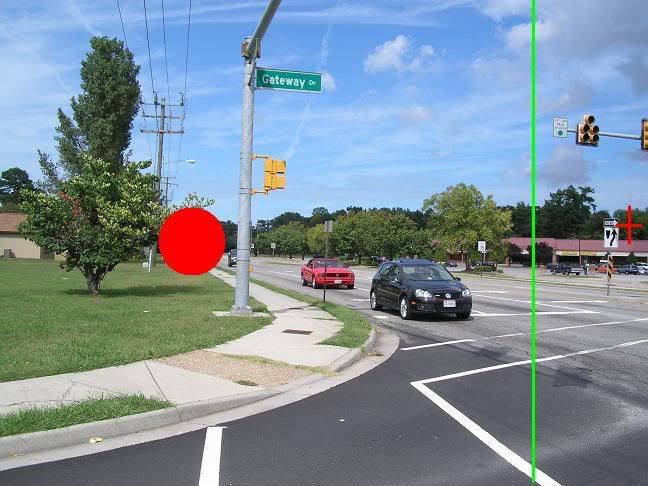


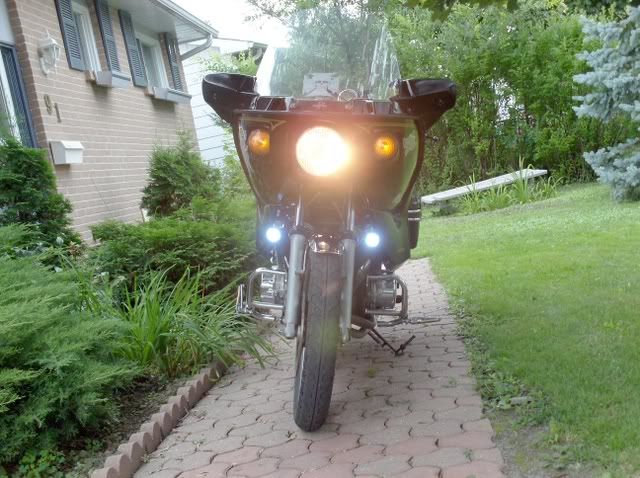

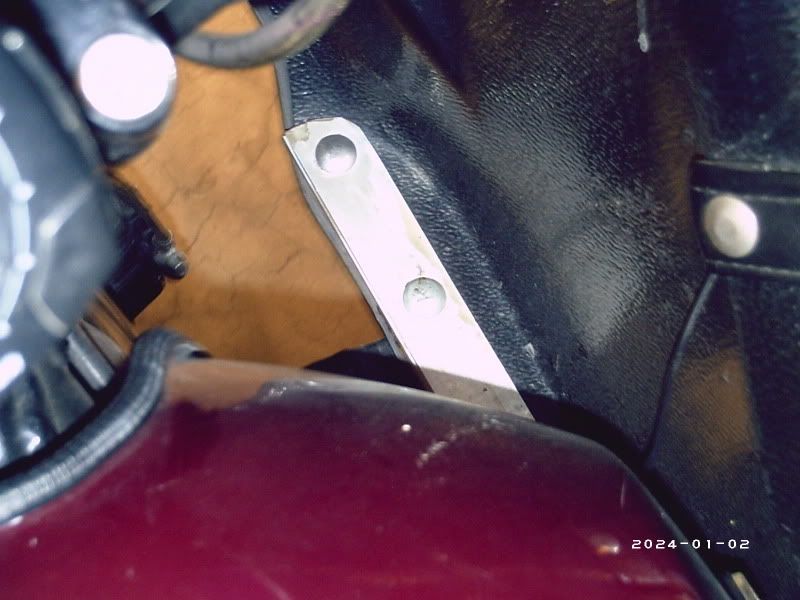
Comment